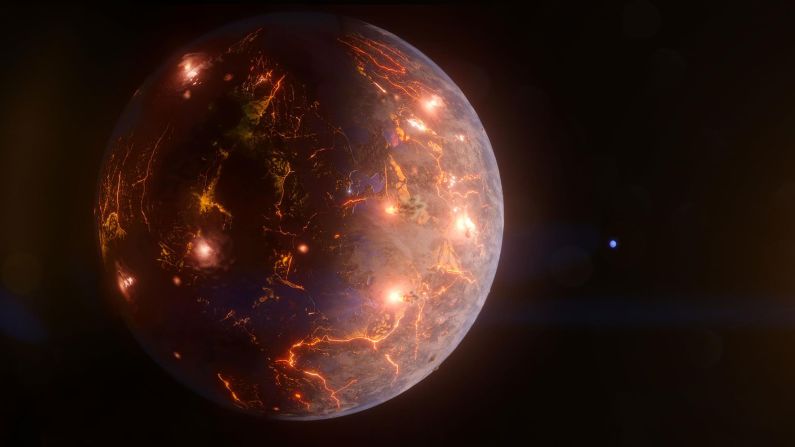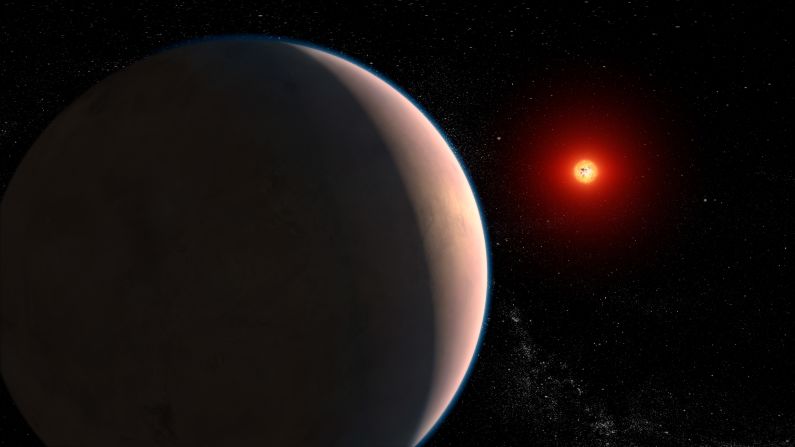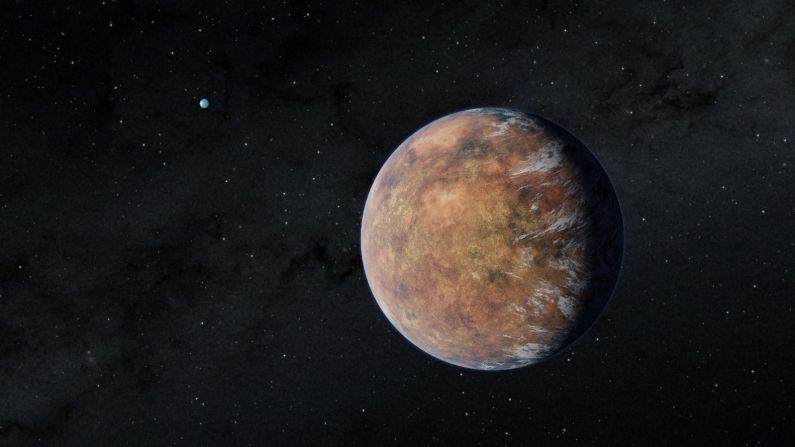Story highlights
Researchers used Hubble to observe a rare double transit of two exoplanets crossing their star
This observation allowed a glimpse into the atmosphere of these planets
For a craft that was launched in 1990, the Hubble Space Telescope continues to provide us with awe-inspiring firsts. This time, researchers pointed its venerable lens in the direction of Earth-size planets beyond our solar system to give us the first glimpse into their atmospheres, according to a new study.
In May, researchers shared the discovery of three Earth-like worlds orbiting an ultracool dwarf star named TRAPPIST-1, 40 light-years away. Ultracool dwarf stars are at the end of the range of what classifies as a star, at half the temperature and a 10th the mass of the sun, so it was a first to find planets orbiting this star. The three exoplanets also appeared to be in the “habitable zone” of the star, meaning liquid water could pool on their surfaces.
Based on the planets’ proximity to TRAPPIST-1 and their respective temperatures and size, researchers believed the planets might be similar to our own, with a rocky structure with habitable regions, rather than being gas giants like Jupiter. Many of the first exoplanets discovered fell into the uninhabitable gas giant category. But without more insight about the atmosphere of these planets, the researchers could only make an educated guess.
About two weeks before their findings were released on May 2, the researchers took another look at the star system using NASA’s Spitzer Space Telescope, which gave them a better understanding of the orbit of the planets. They predicted a rare event called a double transit, in which the two planets closest to the star would pass in front of it almost simultaneously.
“When a planet passes in front of its star, a tiny fraction of the stellar light goes through the planet atmosphere before reaching us, meaning that it carries with it information about the atmosphere it just went through,” said Julien de Wit, lead study author and a postdoctoral associate at MIT.
De Wit realized that Hubble would be in a position to observe this event if it was pointed in the direction of the star system and suggested that his team reach out to NASA with a proposal to capture it. The double transit would occur two weeks later, so they had only a few days to reach out.
In his proposal, de Wit outlined the rarity of the double transit, which wouldn’t occur again for two years, as well as the unique opportunity to “see” the atmosphere of these exoplanets for the first time. The proposal was reviewed and accepted immediately.
Two days after announcing the existence of this star system and its planets, de Wit, NASA’s Hannah Wakeford and Nikole Lewis of the Space Telescope Science Institute, where Hubble is operated, gathered at the institute to receive the data.
As the planets crossed in front of the star, the researchers measured the changes in wavelength and dip in the amount of starlight. When the dips varied only slightly, de Wit and his team realized they could rule out some possibilities for the atmospheric makeup of the planets. Had the wavelengths varied greatly, it would have been indicative of a Jupiter-like planet with a large, puffy atmosphere that was not suitable for life.
To their excitement, both planets had more compact atmospheres that are comparable to those of Earth, Venus and Mars. This led the researchers to determine that the two planets are primarily rocky, more evidence that they could support life.
The next step will be to use a telescope like Hubble to further determine whether that compact atmosphere is hot, dense and dominated by carbon dioxide like Venus’, depleted like that of Mars or warm, moist and clear like Earth’s.
“What we are learning about exoplanet atmospheres is that there is a huge diversity out there,” Wakeford said. “We see it in our own solar system. Each of the planets and moons around the sun are different, with widely differing environments. The era of large surveys for comparative exoplanetology is just getting started, and over the next decade, we will learn so much more about exoplanets and our own.”
Researchers continue to observe TRAPPIST-1 using its namesake ground telescope to survey the sky in infrared. They want to look for other planets in that star system, de Wit said. They are also searching for similar star systems to conduct more atmospheric study. A consortium of researchers building four telescopes similar to but larger than TRAPPIST, named SPECULOOS (Search for habitable Planets EClipsing ULtra-cOOl Stars), will be based in Chile and survey the southern sky for this purpose.
But they also want to raise money to build telescopes for surveying the northern sky. The planets they could find using these telescopes can identify more subjects for the James Webb Space Telescope, launching in 2018.
“The mirror of JWST is nearly three times the size of Hubble’s and will be positioned 1 million miles from the Earth, meaning it can get an unprecedented view of the universe,” Wakeford said.
Follow CNN Health on Facebook and Twitter
The James Webb telescope will be able to detect wavelengths of atmospheric makeup and possibly even ozone, she said.
De Wit and his colleagues are thrilled that they were able to make these two discoveries and share the results so quickly.
“We like to joke about the fact that the ‘Force’ was with us on (May the 4th), but when you look at everything that has happened so far with this system, we’ve really been lucky,” he said, noting that they made the observation on “Star Wars” Day. “What a nice way to start the exploration of other worlds!”






































